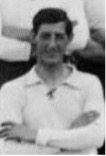Back in 1986, just under 10 miles from the Gtech Community Stadium, a business park opened, with a collection of low-rise business premises in a landscaped environment. Apart from a few people living nearby and those working there, it was probably relatively unknown until “Stockley Park” became the home of VAR (Video Assistant Referee).

Across the years, controversial refereeing decisions live long in the memory – Mike Newell’s handball “goal” for Wigan which was missed by the ref at Wembley in the Freight Rover Trophy final (1985) is one of mine.
Even back in 1913 a referee disallowed a late Bees equaliser which so antagonised the Griffin Park faithful that he required a police escort as he left the field.
Incidents like these are recalled for the wrong reason (in the eyes of Bees fans) but these would surely have been reviewed and correctly reversed had VAR had existed at those, and many other, matches.
VAR for us started with our promotion to Premier League but is still seen as an imperfect tool.

However, to assist with a better understanding, the FSA (Football Supporters’ Association) recently arranged a meeting at Stockley Park with the Premier League, the PGMOL (for the referees) and a representative from a fan group at each Premier League club (which I attended on behalf of Bees United for Brentford FC).
The trip was a fascinating insight into the process, unfortunately, no photos were allowed to be taken during the visit although my images would only have been of non-descript rooms and lots of screens.
There was no trace of any displays which (contrary to urban myth) might favour or unfavour any particular club!
The layout of the VAR centre was recorded in a YouTube video when the centre opened:
We were given a high-level oversight into the VAR process. Fundamentally any incident during a game which is reviewed by VAR must be applied against the current Laws of the Game. Those working at Stockley Park cannot therefore apply their own interpretation to a rule. If a law is proving a challenge to apply using the latest technology, then there is a (long) process is in place to progress changes, which ultimately will need FIFA’s approval to amend before it is applied to football worldwide.
It was also shared with us, that in the days after a game, there is a review of every aspect of VAR/Referee’s decisions made during the match. A panel of 5 (including 2 ex-players) look back at the incidents and vote as to whether it is considered correct, or not. This process has the benefit of hindsight and has plenty of time plus every camera angle to reach a conclusion.
The time it took for a VAR decision is also assessed. Apparently, this season the average VAR “delay” is 38 seconds, compared to slightly over a minute last season. As at the date of the visit, VAR had correctly amended 60 on-field decisions, although acknowledging that 12 weren’t (a figure lower than at a similar point last season).
Howard Webb, the PGMOL Chief Refereeing Officer, confirmed that they were working hard to continually improve all aspects of the VAR process. It was interesting to hear that each Premier League referee now has a choice as to whether they are just an on-field ref, or undertake a mix of on-field & VAR, whichever their preference.
The afternoon concluded with a look at the “hot seat” itself and to see in detail how VAR operates on a matchday. The VAR floor of Stockley Park has a number of dedicated hubs which are in operation on a matchday, each with 3 people working in them – all of which is all filmed to ensure integrity of the process. (These areas are now distinct offices, with doors, as opposed to the images on the YouTube video, so those involved can’t be distracted.) The main VAR Assistant Referee sits in the middle of the 3, with 2 large screens in front of them. The top one shows the live feed from the match, whilst the bottom one is used for replays. To their left is another assistant who also watches a live feed with their secondary screen showing the pictures being broadcast on live TV. The other assistant (on the right) also has a live feed screen, but their main screen has multiple images on it displaying pictures from every camera in operation at the ground.
The moment a “questionable” event occurs on the live feed screens, the best angle(s) will be identified on the multi-screen and relevant ones “swiped” across to the main VAR Assistant Referee from the screen on the right. Often these initial images can swiftly resolve the decision, however if it still remains unclear, the VAR Assistant Referee can ask for more/different angles etc from the multi-screen. As when watching on TV, the feeds can be rewound, frames frozen and the lines added for offsides. Although with so many cameras in the ground this can take some time.
The overall impression was how exceptionally well managed the whole environment was and the recognition that it is a continual learning process. The personal preferences of any individual towards or against any club/player just doesn’t appear possible given the close scrutiny of all those involved in decisions.
Going forward, the PGMOL want to improve the dialogue with supporters, and they are planning further initiatives to engage with fans.
A full report of the visit is available on the FSA website Refereeing: Fan reps visit PGMOL HQ – Football Supporters’ Association
For referees and clubs to have a greater appreciation of each other is nothing new and maybe again Brentford were ahead of time. Back in 1926 the club appointed a former referee, Harry Curtis, as the club’s new manager – he would, of course, be the only other manager/head coach to take us to the Top Tier, 9 years later.
 Although if social media had existed in that era, it might have been seen as a controversial appointment.
Although if social media had existed in that era, it might have been seen as a controversial appointment.
In our league game at Newport in February 1922 right winger, Alf Capper (pictured, in our then white shirts), disputed a throw-in decision by a linesman rather too vigorously and became the first Bees player to be sent off in a Football League match.
The referee that day was ……… Harry Curtis.
Jonathan Burchill
For 116 years, and deriving its name from the symbol of a brewery that owned the orchard before the stadium, Griffin Park witnessed highs and lows with over 2,800 football matches.
Griffin Park was the only English football stadium that had a pub on each corner.
In his fascinating book, Jonathan Burchill presents a unique history of Brentford FC through season-by-season reviews of the events at Griffin Park.
Jonathan weaves an extended, fascinating insight not just into this remarkable West London football club but into the social history affecting those connected with it for over a century.
Semi-automated offside technology: What you need to know
Here is the PL article explaining semi automated offside technology

